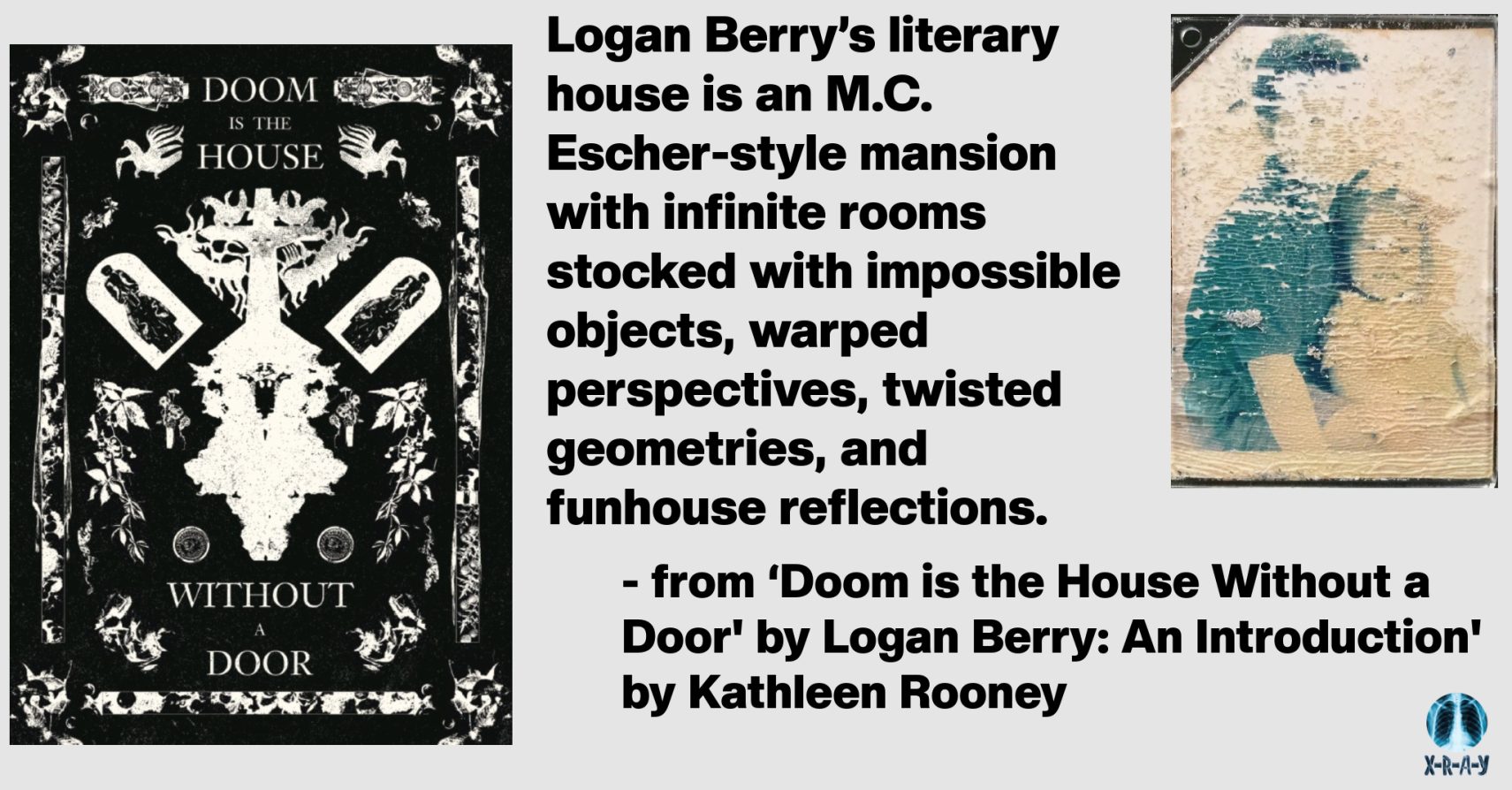
‘DOOM IS THE HOUSE WITHOUT A DOOR’ BY LOGAN BERRY: AN INTRODUCTION by Kathleen Rooney
Doom is the House without the Door—‘Tis entered from the Sun—And then the Ladder's thrown away,Because Escape—is done—
Logan Berry’s literary house also has no door, but not in the sense that one is trapped inside by walls lacking egress. Rather, nothing blocks this house’s threshold because the builder wants us to walk in and snoop.
Logan Berry’s literary house is an M.C. Escher-style mansion with infinite rooms stocked with impossible objects, warped perspectives, twisted geometries, and funhouse reflections.His literary house is a Piranesi drawing come to life, rife with endless staircases, akin to that artist’s Imaginary Prisons, full of subterranean vaults and extreme machines and round towers and men being stretched on the rack and grand piazzas lit with smoldering fires and connected with drawbridges and gothic arches, hung with rusty chains and scented with fetid wells and decorated with monsters in bas-relief.Logan Berry’s literary house is in every sense of the word a capriccio; in English a caprice—an architectural fantasy that puts new buildings and archaeological ruins and other artifacts and detritus in fantastical combinations that gratify the artist and intrigue the viewer with their dreamlike juxtapositions and liberty of imagination. One etymology for capriccio is that it derives from the Italian for the unpredictable movements and behaviors characteristic of a juvenile goat, suggesting that the work should be as freakish and mercurial as the artist can make it.Logan Berry’s literary house is a structure only partly built, but currently without end, an edifice that will keep growing until he either stops (perish that thought) or dies (perish that too, but everyone perishes).The oldest email exchange between myself and Logan that I could find is from January of 2014. He was a student in my intro to Creative Writing class at DePaul. Everyone had to write an elegy and Logan’s, addressed to his sister and called, “I Will Die Lex,” was so promising that I asked his permission to share it with the class and I’ve been a fan ever since. It ended:Death staked His claimLike Columbus and his flag España.Fingers trace the entry,Sting sings.
Hand thrown aside.My body, a stepping-stone in the slush.Soot Sunset.
That was the open door I walked through to commence my tour of Logan Berry’s literary house. I feel lucky that I’ve got Transmissions to Artaud (Selffuck, 2020), Run-off Sugar Crystal Lake (11:11 Press, 2021), Casket Flare (Inside the Castle, 2023), Ultratheatre: Volume 1 (11:11 Press, 2024) and now Doom. About this room of the building, I have written: “A visual and verbal fantasia of money, meat, and misery, Logan Berry’s Doom Is the House Without a Door dances to the demonic, infernal rhythms of the 21st century. To look into this book’s gargoyle face is to risk allowing it to reap your soul. Its phantasmagoria of fucked-up fatherhood makes voyeuristic perverts of us all.” Logan Berry’s literary house is perpetually under construction, a kind of Winchester Mystery House, never-ending and mystifying: why did the creator do this? His literary house is above all a memory palace of things he cannot forget. Once we visit, we cannot forget them either.“Nature is a haunted house—but Art—a house that tries to be haunted.” Emily Dickinson wrote that in a letter to Thomas Wentworth Higginson in 1876.Logan Berry’s literary house is haunted. Long may he haunt.